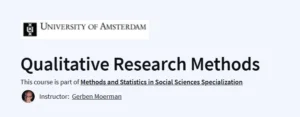What will you in the Microeconomics: The Power of Markets Course
Grasp the fundamental concepts of microeconomic theory and decision-making.
Understand how individuals and firms allocate scarce resources.
Analyze consumer behavior, demand, and utility maximization.
Explore producer behavior, production functions, and cost structures.
Develop the ability to apply microeconomic tools to real-world problems.
Program Overview
1. Introduction to Microeconomics
Duration: 2 hours
Overview of microeconomics as a field of study.
Key concepts like scarcity, choice, and opportunity cost.
2. Demand, Supply, and Market Equilibrium
Duration: 3 hours
Understand how demand and supply interact in a competitive market.
Explore market equilibrium, price formation, and shifts in curves.
3. Elasticity and Market Sensitivity
Duration: 3 hours
Learn price elasticity of demand and supply.
Apply elasticity concepts to revenue and tax incidence.
4. Consumer Behavior and Utility Theory
Duration: 3.5 hours
Analyze how consumers make choices based on utility.
Study marginal utility and the law of diminishing returns.
5. Production and Cost Functions
Duration: 3.5 hours
Understand the short-run and long-run production functions.
Examine total, average, and marginal cost relationships.
6. Market Efficiency and Failure
Duration: 2.5 hours
Explore concepts of allocative efficiency and market failure.
Discuss externalities and government interventions.
Get certificate
Job Outlook
Economic Analysts & Consultants: Build foundational knowledge for careers in policy, business, and consulting.
Business & Finance Professionals: Gain tools to understand market mechanisms and consumer behavior.
Students in Economics & MBA Programs: Prepare for advanced economics and quantitative modeling.
Public Sector Professionals: Learn frameworks for evaluating regulation and market-based decision-making.
Freelancers & Researchers: Use microeconomics to inform pricing strategies and strategic planning.
Specification: Microeconomics: The Power of Markets
|





